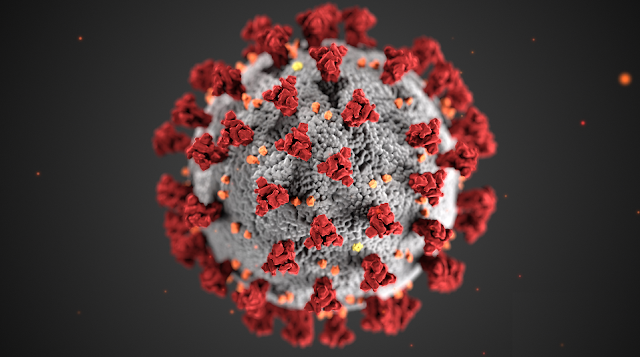As states reopen
As states reopen, here’s how you
protect yourself from the
coming surge
May 5, 2020 at 1:04 p.m. PDT
First, prepare for a massive surge.
More than 40 states have announced plans to lift restrictions, even though only a handful have met the minimum criteria for reopening as outlined by the White House coronavirus task force. The consequences of this are all too predictable, because the science around covid-19 has not changed: Without a vaccine or cure, the only thing keeping the disease in check has been keeping people separated from one another. Once social distancing is relaxed, covid-19 will again spread with explosive speed.
But, of course, that might not be apparent for weeks or even months. That’s because of the lag between new exposures to the virus and the subsequent increase in infections, hospitalizations and deaths. As everyone knows by now, the incubation period — the time between exposure and symptoms — is up to 14 days. It could take another week or two before people become ill enough to seek medical care, and another week or more for those who are severely ill to succumb to the virus.
The danger here is that policymakers and the public will jump to the wrong conclusions if they don’t immediately see the numbers increasing. Instead of breathing a sigh of relief, they should prepare for the surge that will inevitably arrive a month or so from now: What New York went through at its peak will happen in communities across the country. Hospitals will become overwhelmed with ill patients. Staff will be forced to ration personal protective equipment. There will be shortages of intensive care unit beds and ventilators.
The difference is that this time there will likely be numerous outbreaks at once. That will strain the nation’s capacity to respond. Also worrisome is that many of these outbreaks will occur in rural communities that already struggle with lack of hospitals and health-care.
Our only advantage now is that we can easily see it coming a month ahead. The more people return to life as usual, the more hospitals should prepare for an influx. Elected leaders, public health officials and hospital CEOs should be urgently preparing for this expected surge.
Now is also the time to fully implement pandemic response plans to shore up health-care capacity across the country. In addition, no state has yet set up the testing, contact tracing and quarantining needed to contain the virus. State and local officials should do their best to ramp up these public health capabilities as they call upon the federal government to put forth the national coordinated effort to secure needed supplies and staff.
Second, stay safe for yourself and for those around you.
Just because you now can go out in public doesn’t mean you should. This is not the time to plan family gatherings, dinner parties and play dates. Restaurants, retail shops and salons might be open, but is going worth the risk?
Residents in reopening states should follow the same public health guidance as when they were under shelter-in-place orders: Stay six feet away from people. Wash your hands frequently. Wipe down surfaces that others are touching.
If you must return to work, be an advocate for your health: Ask your employer what practices are being put into place to protect workers and customers. Inquire about telecommuting, staggered shifts and other possibilities. Risk is cumulative: The more people you have contact with, the higher your risk of contracting the virus. Do your best to continue to limit your interactions with people outside of work.
And try to reduce the risk for others, as well. Wear a mask when in public. Drive, walk or bike if you can, and reserve public transportation for those who have no other choice. Keep a daily diary of where you’ve been and with whom you spent time — that way, if you’re found to have covid-19, it will be easy to trace your contacts. Most important, stay home if you can. Social distancing is a privilege that many do not have.
It will be tempting to see reopening as a return to our way of life before the coronavirus, but it will be anything but. As a society, we have made the decision to reopen before the science says we are ready. We are knowingly going back to where we were in mid-March, before the first exponential surge in infections and deaths. That surge will come again, but this time no one can say they didn’t see it coming.


Comments
Post a Comment